AI-powered multichannel communication platforms driving business growth
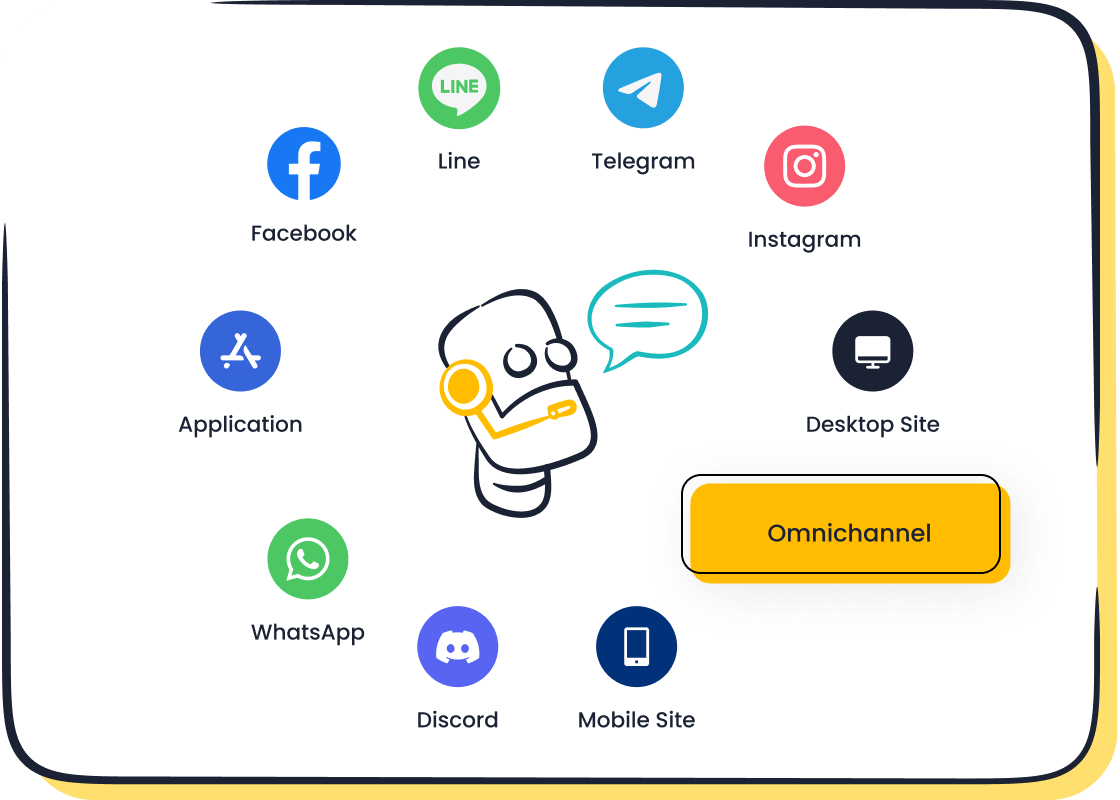
AI-powered multichannel communication platforms help businesses grow by making interactions with customers and teams seamless, personalized, and efficient. Companies like Opay have seen customer satisfaction jump from 60% to 90% after adopting Sobot. The latest industry statistics show that 86% of service teams now test or use AI tools, with up to 95% of customer service interactions expected to be managed by AI by 2025.
| Metric Description | Statistic / Percentage |
|---|---|
| Companies currently using AI agents | 10% |
| Companies planning to adopt AI agents within a year | Over 50% |
| Companies using AI to improve customer support | 80% |
| Service teams testing or implementing AI tools | 86% |
| AI expected to manage customer service interactions | Up to 95% by 2025 (voice and messaging channels) |
| Customer service professionals viewing AI as essential | 79% |
| Executives seeing AI as positive for customer engagement | 91% |
| Executives believing fast automated resolutions increase loyalty | 88% |
Sobot AI and the Sobot call center offer businesses a clear edge by unifying interactions across every channel. As market trends accelerate, adopting a multichannel communication platform becomes essential for staying competitive.
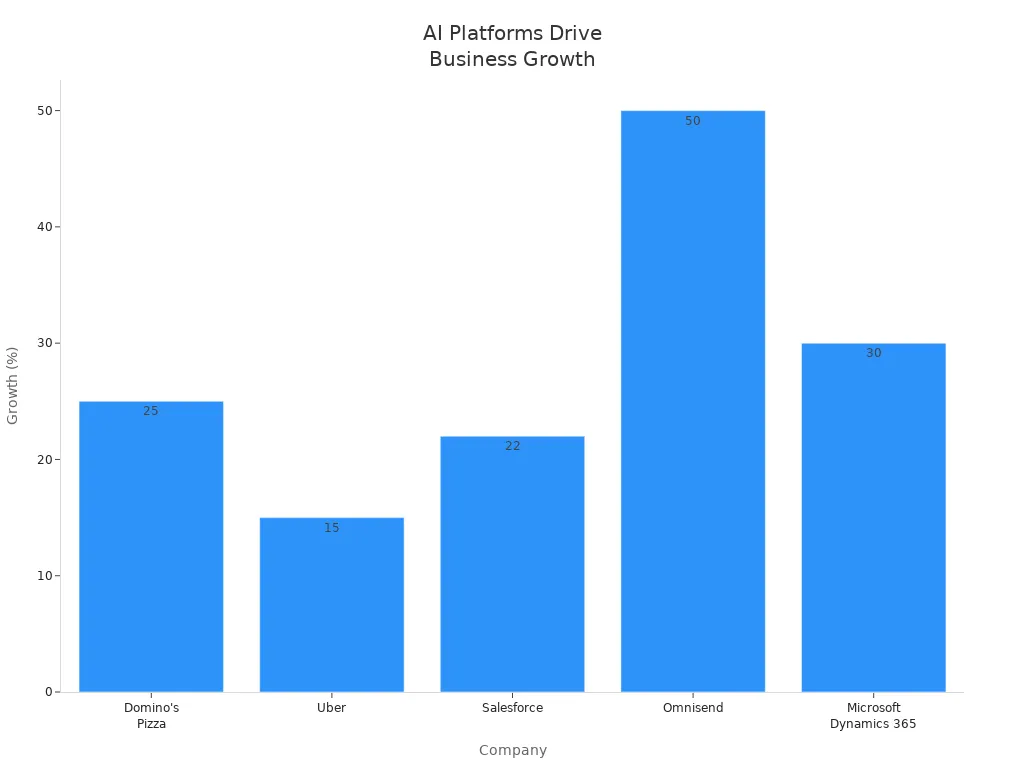
What is a multichannel communication platform?
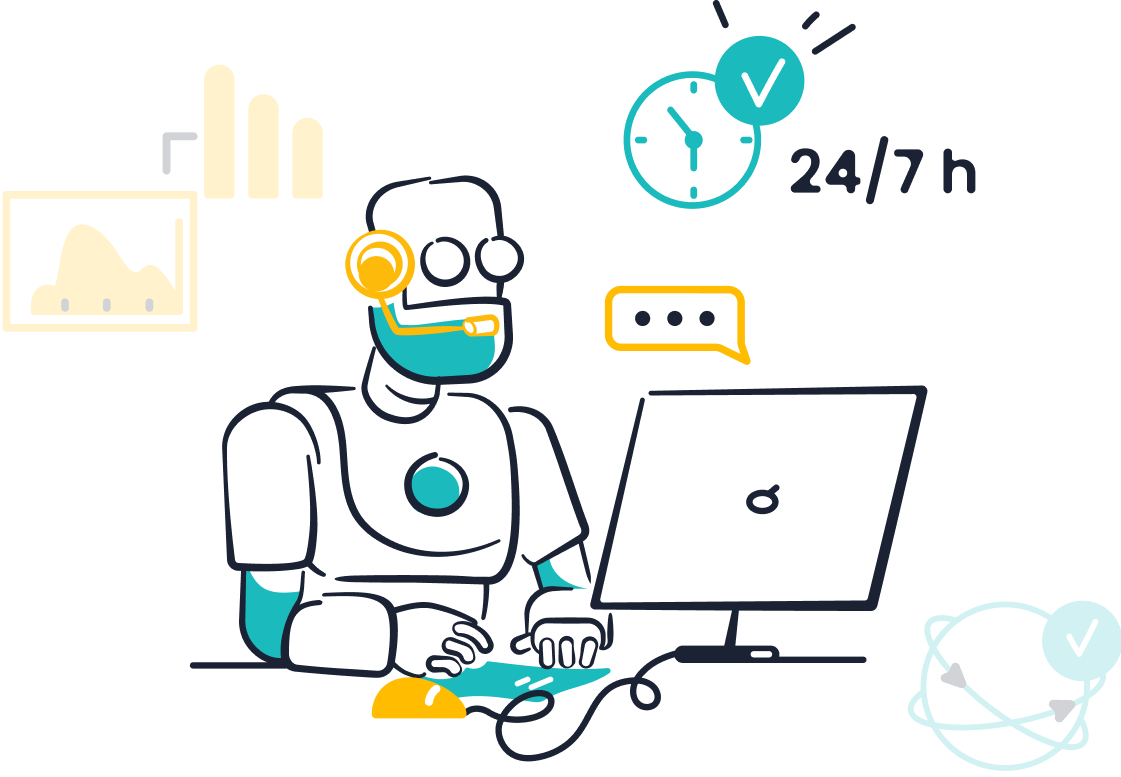
A multichannel communication platform allows businesses to connect with customers and teams across many channels, such as phone, email, SMS, live chat, and social media. Unlike traditional communication solutions, which often focus on a single channel and lack integration, a multichannel communication platform gives companies the flexibility to reach people wherever they are. This approach improves accessibility but can create isolated customer experiences if the channels do not work together. Customers may need to repeat information when switching between channels, leading to frustration and inconsistent service.
| Feature | Multichannel Communication Platforms | Traditional Communication Solutions |
|---|---|---|
| Integration | Channels operate independently, causing siloed data | Limited to single or few channels, lacking integration |
| Customer Experience | Disjointed, customers repeat information | Linear, fewer touchpoints |
| Personalization | Limited due to data silos | Minimal personalization |
| Business Impact | Improves reach, less effective for loyalty | Basic operational impact |
| Technology | Basic routing, less advanced | Legacy, single-channel systems |
| Metrics | Channel-specific, not unified | Limited, channel-specific |
Key features
A modern multichannel communication platform includes several essential features. Agent dashboards centralize all channels, making it easy for agents to manage queries from phone, email, SMS, live chat, and social media in one place. Call routing directs customers to the right department based on language or expertise. AI and automation, such as an AI chatbot, handle common questions and automate workflows, freeing agents for complex issues. Integrations with CRM and business tools keep workflows smooth. Real-time analytics help businesses track key metrics and improve performance. Scalability and flexible pricing allow the platform to grow with the business. Omnichannel support ensures customers receive consistent service, no matter which channel they use.
Sobot’s approach
Sobot stands out as a leading multichannel communication platform by offering an all-in-one contact center solution. Sobot’s platform unifies voice, live chat, email, SMS, and social media, allowing businesses to manage every interaction from a single dashboard. The Sobot AI chatbot provides 24/7 support, handles queries in multiple languages, and automates routine tasks. Sobot’s omnichannel approach ensures customers never have to repeat themselves, creating a seamless experience. The platform integrates with popular business tools and offers real-time analytics, helping companies make data-driven decisions. Sobot’s focus on innovation, security, and scalability makes it a trusted choice for businesses seeking to improve customer satisfaction and operational efficiency.
AI trends in multichannel communication
Generative AI
Generative AI stands at the forefront of communication tech trends in 2025. Companies now use generative AI to automate over 80% of customer interactions, providing fast, personalized responses in more than 30 languages. This technology powers intelligent virtual agents that handle routine questions, predict customer needs, and launch targeted marketing campaigns. For example, Sobot integrates generative AI into its multichannel communication platform, enabling businesses to deliver context-aware support and proactive engagement. By combining predictive analytics with generative AI, organizations reduce resolution times by up to 70% and improve customer satisfaction by nearly 10%. Generative AI also supports team workflows, automates ticket processing, and ensures seamless escalation to human agents when needed. These trends highlight the importance of innovation and continuous improvement in multichannel environments.
Omnichannel integration
Omnichannel integration has become a defining trend in multichannel communication. Businesses that adopt an omnichannel strategy retain 89% of their customers, compared to only 33% for those with weak strategies (Invesp). Omnichannel communications ensure customers never need to repeat information, creating a seamless journey across digital and physical touchpoints. Sobot’s platform exemplifies this trend by unifying voice, chat, email, and social media into one dashboard. This approach increases conversion rates, boosts sales, and enhances loyalty. Companies with strong omnichannel strategies see three times more revenue growth than their peers. Real-time synchronization and centralized data reduce operational costs and improve service quality. Omnichannel integration is now essential for delivering consistent, personalized experiences in multichannel environments.
Real-time analytics
Real-time analytics drive the next wave of communication tech trends in multichannel and omnichannel communications. AI-powered solutions like Sobot consolidate data from every channel, providing instant insights through user-friendly dashboards. These analytics help businesses identify trends, monitor KPIs, and make informed decisions quickly. Real-time data enables teams to spot issues early, optimize resource allocation, and personalize customer interactions. With self-service BI tools, users generate reports without IT support, restoring confidence in data accuracy. Companies using real-time analytics report faster decision-making, improved sales performance, and higher customer satisfaction. As ucaas and multichannel platforms evolve, real-time analytics remain a cornerstone of innovation and business growth.
AI-driven personalization
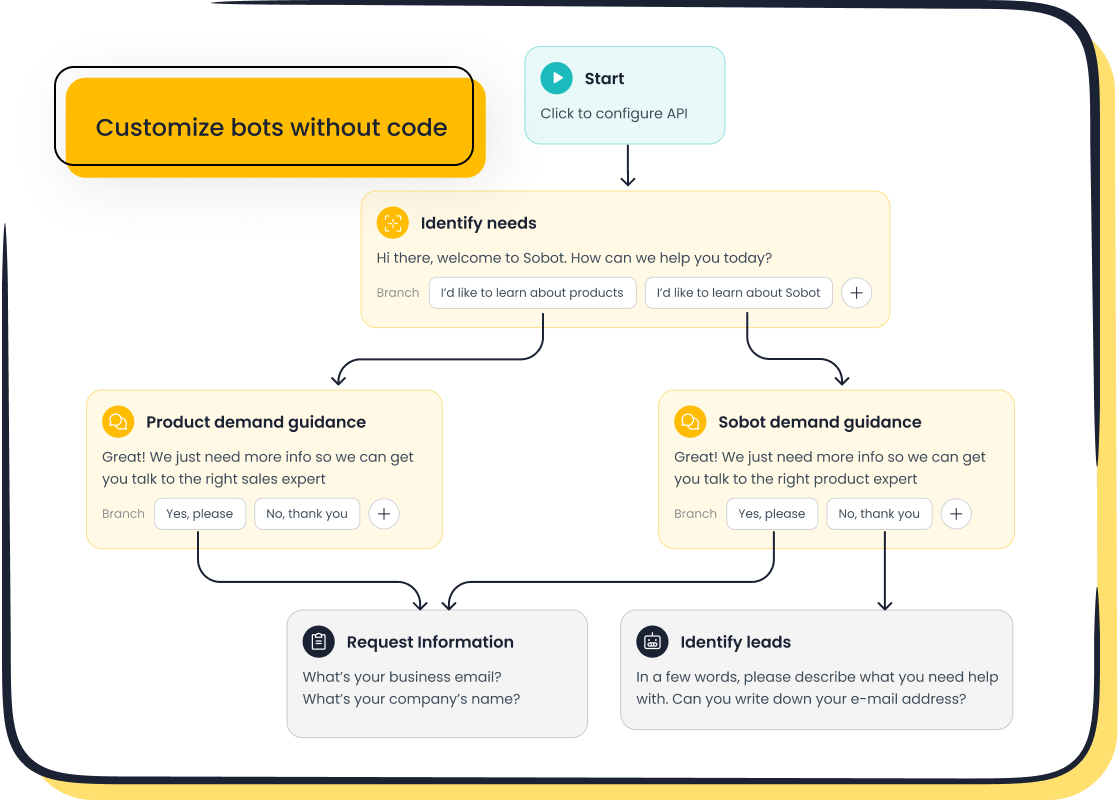
Customer experience
AI-driven personalization has transformed the way businesses approach the customer experience. Companies now use AI to analyze customer data from every interaction, including purchases, browsing history, and support requests. This analysis allows businesses to create hyper-personalized customer journeys that adapt in real time. AI can recognize customer preferences, predict needs, and deliver tailored recommendations across channels like chat, email, phone, and social media.
Customers expect immediate, relevant responses. According to industry research, 72% of customers want instant service, and 79% expect consistent interactions across all channels. AI meets these expectations by providing real-time, personalized communication that feels natural and human. For example, AI chatbots can detect customer emotions and adjust their responses to show empathy, creating a more engaging experience.
The impact of AI-driven personalization is clear. Companies using AI for personalization report higher engagement, increased loyalty, and improved conversion rates. The following table highlights the measurable benefits seen by leading brands:
| Metric / Example | Impact / Result |
|---|---|
| Sephora’s Beauty Insider program | 30% increase in customer engagement; up to 35% higher redemption rates |
| Increase in Customer Lifetime Value (CLV) | 20% increase through AI personalization |
| Churn Rate Reduction | Up to 35% lower churn rates compared to traditional methods |
| Conversion Rate Improvement | 15% higher conversion rates reported by companies using AI personalization |
| Customer Expectation | 72% of customers expect immediate service, met by AI-driven real-time personalization |
| Netflix Recommendation Engine | Estimated $1 billion annual savings by reducing subscriber cancellations via AI personalization |
| Starbucks AI-Personalized Rewards | Increased customer loyalty and repeat purchase rates through personalized offers |
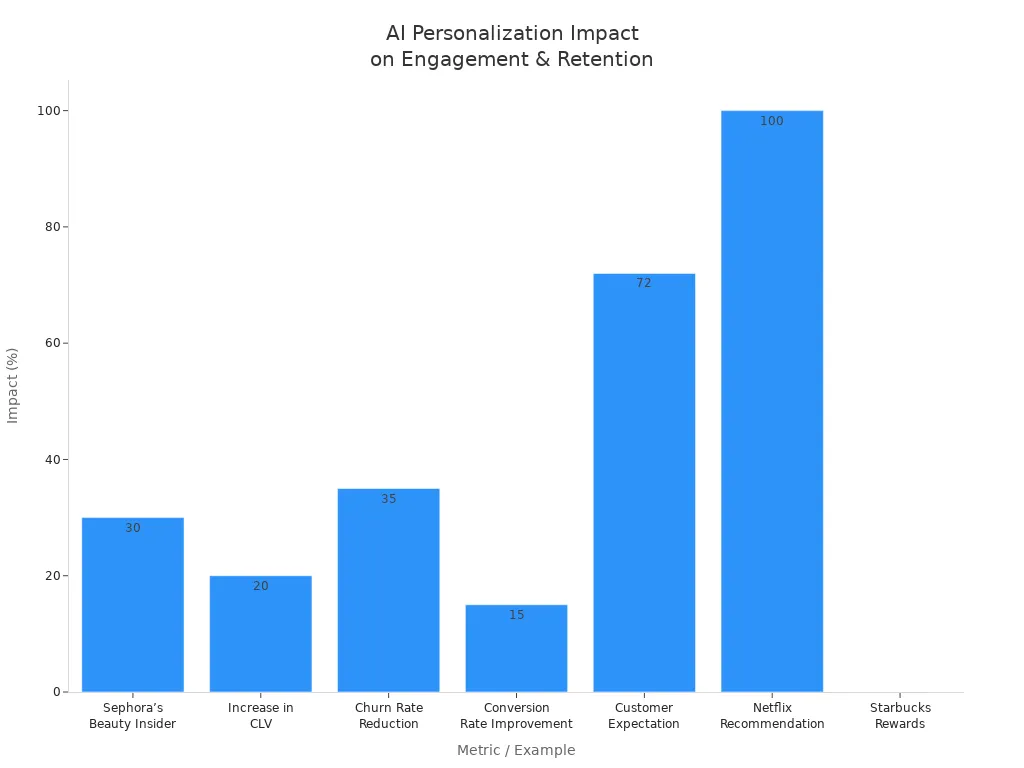
AI-driven personalization not only improves the customer journey but also delivers significant business results. Research from McKinsey and Gartner shows that AI personalization can increase marketing ROI by 25%, boost sales by 20%, and reduce customer churn by 28%. Personalized campaigns powered by AI help brands connect with customers at the right moment, driving higher engagement and satisfaction.
Note: AI consolidates customer data from multiple sources, enabling seamless and consistent experiences across every channel. This unified approach ensures that customers never have to repeat themselves, and agents always have the full context for every interaction.
Sobot Chatbot in action

Sobot’s AI chatbot brings the power of hyper-personalization to businesses of all sizes. The chatbot operates 24/7, supporting over 100 languages, and delivers proactive messaging based on customer behavior and preferences. Sobot’s AI chatbot uses advanced natural language processing to understand context, intent, and emotion, allowing it to provide accurate, empathetic responses.
Businesses using Sobot’s AI chatbot see measurable improvements in customer experience and operational efficiency. For example, OPPO achieved an 83% chatbot resolution rate and a 57% increase in repurchase rates. Samsung reported a 97% customer satisfaction rate, thanks to multilingual support and real-time insights. Agilent Technologies experienced a sixfold increase in service efficiency and a 25% reduction in costs, while Opay improved customer satisfaction from 60% to 90% and reduced costs by 20%.
| Company | Measurable Outcomes | Impact Area |
|---|---|---|
| OPPO | 83% chatbot resolution rate; 57% increase in repurchase rates | Customer service efficiency; Sales growth |
| Samsung | 97% customer satisfaction rate via multilingual support and real-time insights | Customer satisfaction |
| Agilent Technologies | 6x increase in service efficiency; 25% cost reduction; 95% customer satisfaction | Operational efficiency; Cost savings; Customer satisfaction |
| Opay | Customer satisfaction improved from 60% to 90%; 20% cost reduction | Customer satisfaction; Cost savings |
| Unnamed source | 20% reduction in inbound volume; 96%+ positive feedback | Operational efficiency; Customer feedback |
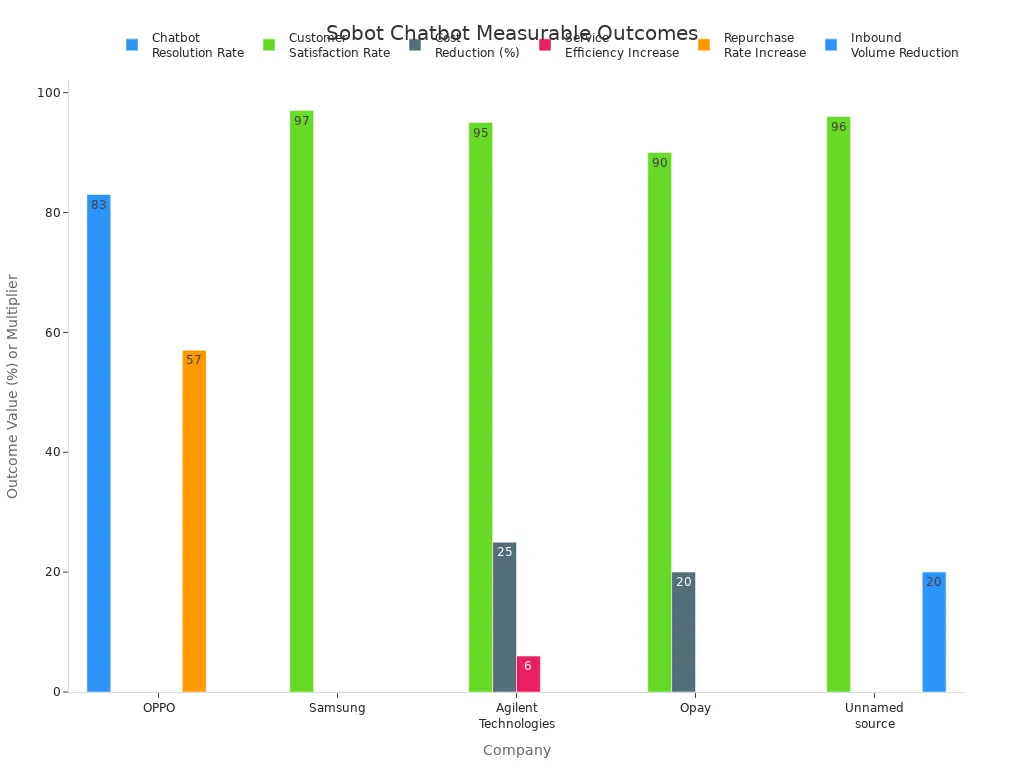
Sobot’s AI chatbot enables hyper-personalized customer journeys by:
- Consolidating customer data from every channel into unified profiles.
- Analyzing patterns and preferences to tailor recommendations and responses.
- Adapting in real time to customer emotions and needs.
- Delivering proactive messages, such as reminders or special offers, at the right moment.
- Supporting seamless transitions between channels, so customers enjoy a consistent experience.
These features drive higher engagement and satisfaction. Sobot’s AI chatbot reduces inbound service volume by 20% and receives over 96% positive feedback. Businesses benefit from improved efficiency, lower costs, and stronger customer loyalty.
AI-driven personalization, powered by solutions like Sobot, creates hyper-personalized customer journeys that meet modern expectations. Companies can deliver consistent, emotionally intelligent experiences across every interaction, building lasting relationships and driving business growth.
Business benefits
Efficiency and cost savings
AI-powered multichannel communication platforms transform business operations by driving efficiency and reducing costs. Companies automate up to 80% of customer interactions, which lowers the need for manual work and allows teams to focus on complex tasks. For example, AI chatbots handle routine questions, freeing agents to solve more challenging issues. This shift leads to faster response times and higher productivity.
Many organizations report significant savings after adopting a multichannel communication platform. Businesses see up to 60% in operational cost reductions and a 90% decrease in manpower needs. AI-driven automation eliminates repetitive tasks, streamlines workflows, and improves data accuracy. Companies like Airbnb and Amazon use AI to optimize processes, cut overhead, and boost profitability. Sobot’s platform integrates voice, chat, email, and social media, enabling seamless workflow automation and reducing the need for extra staff.
AI-powered automation helps businesses cut labor costs by 20-30%. Employees can focus on higher-value activities, which increases overall efficiency.
A multichannel approach also supports automated customer engagement, such as proactive messaging and reminders. This strategy not only saves time but also increases engagement rates and customer satisfaction. Sobot’s AI chatbot, for instance, operates 24/7, handling inquiries across multiple channels and languages, which reduces support costs by up to one-third while improving the customer experience.
Scalability
Scalability is a key advantage of modern multichannel communication platforms. As businesses grow, they need solutions that can handle more users, locations, and interactions without losing performance. AI-powered platforms like Sobot adapt to changing needs, allowing companies to add new channels or expand their teams easily.
| Feature | Scalability Benefit |
|---|---|
| Integration with existing systems | Streamlines customer experience across channels, supporting growth without performance loss. |
| Automation | Reduces manual work, automates repetitive tasks, allowing focus on strategic initiatives. |
| AI digital assistant | Automates content creation, reminders, and engagement nudges, enabling quick scaling of initiatives. |
| Analytics and reporting | Provides real-time insights to optimize engagement and measure success without guesswork. |
| Flexible customization | Adapts to changing business needs and growing interaction volumes without compromising performance. |
A unified multichannel platform brings together voice, SMS, chat, email, and social media in one interface. This integration prevents data silos and ensures a consistent omnichannel experience. Sobot’s platform connects with CRM, ERP, and help desk tools, making it easy to scale operations as demand increases. Automation shortens sales cycles and increases conversions, while AI extends service hours without adding headcount.
Companies using AI automation experience faster, smarter scaling and improved operational agility. White-label AI solutions let agencies grow services under their own brand, without extra infrastructure.
Data-driven decisions
AI-powered multichannel communication platforms enable businesses to make smarter, faster decisions. These platforms collect and analyze data from every customer interaction, providing real-time insights that drive continuous improvement. Decision Intelligence (DI) combines AI, analytics, and human expertise to turn data into actionable strategies.
- AI systems analyze large datasets quickly, identifying patterns and trends that improve decision quality.
- Predictive analytics help businesses anticipate customer needs, optimize marketing spend, and identify new sales opportunities.
- Real-time insights allow teams to spot issues early and adjust strategies on the fly.
- AI simulates scenarios for risk assessment, helping leaders evaluate outcomes before making big decisions.
- Data-driven personalization shapes the customer journey, delivering tailored experiences that boost engagement and loyalty.
Sobot’s platform offers advanced analytics and reporting tools, giving businesses a clear view of performance across all channels. Companies like Netflix and Spotify use AI to personalize recommendations, which increases engagement and satisfaction. With Sobot, organizations can measure key metrics, optimize workflows, and align decisions with business goals.
Research shows that effective decision-making practices, powered by AI and analytics, strongly correlate with improved financial performance.
Real-world results
Businesses that implement AI-powered multichannel communication platforms see measurable improvements across key metrics. The following table highlights some of the most significant benefits:
| Business Benefit | Metric / Result |
|---|---|
| Reduction in manpower needs | 90% |
| Operational cost savings | 60% |
| Increase in customer satisfaction | 27% boost in CSAT scores |
Many companies share success stories after adopting a multichannel communication platform. For example, Opay, a leading financial service provider, partnered with Sobot to unify its customer service across social media, email, and voice channels. After implementation, Opay achieved a 90% customer satisfaction rate, a 20% reduction in costs, and a 17% increase in conversion rates. The platform’s omnichannel approach allowed Opay to manage high volumes of inquiries efficiently, send targeted marketing messages, and deliver a seamless customer experience.
Other brands have seen similar results:
- Unity saved $1.3 million by deflecting 8,000 tickets with AI agents.
- Benefit Cosmetics achieved 50% higher click-through rates and 40% more revenue through AI-driven personalized messaging.
- Fast-growing companies generate 40% more revenue from personalization efforts compared to slower competitors.
Companies that embrace omnichannel strategies and AI-driven engagement outperform their peers in revenue growth, customer loyalty, and operational efficiency.
Sobot’s multichannel communication platform empowers businesses to deliver consistent, high-quality experiences at scale. By leveraging AI, automation, and real-time analytics, organizations can reduce costs, improve engagement, and drive sustainable growth.
Overcoming challenges
Adopting AI-powered multichannel communication platforms brings many benefits, but businesses often face several challenges during implementation. Addressing these obstacles early helps ensure a smooth transition and maximizes the value of new technology.
Integration
Many organizations struggle with integrating new AI solutions into their existing systems. Aligning AI with current customer service tools can be complex and time-consuming. Companies often encounter issues such as:
- Data quality problems, including messy or incomplete records.
- High upfront costs for integration and setup.
- Compatibility concerns with legacy systems.
Sobot addresses these challenges by offering flexible APIs and seamless integration with popular CRM, ERP, and help desk tools. The platform supports phased implementation, allowing businesses to start small and expand as needed. This approach reduces risk and helps teams adapt gradually.
Tip: Conduct a data audit before integration. Clean and organize customer data to improve AI effectiveness and ensure accurate insights.
Data privacy
Protecting customer data remains a top priority for every business. AI-powered platforms must comply with strict regulations, such as GDPR, to build trust and avoid penalties. Companies worry about data breaches, unauthorized access, and ethical use of information.
Sobot’s platform uses advanced encryption, continuous backups, and strict access controls to safeguard sensitive data. The system maintains compliance with global standards, giving businesses peace of mind. Regular security updates and transparent privacy policies further strengthen customer trust.
| Data Privacy Challenge | Sobot’s Solution |
|---|---|
| Regulatory compliance | GDPR-compliant platform |
| Data security | End-to-end encryption, secure backups |
| Access control | Role-based permissions |
| Transparency | Clear privacy policies |
Change management
Introducing AI into daily workflows can cause resistance among employees. Some team members may worry about job security or feel uneasy about new technology. Successful change management requires clear communication and ongoing support.
Best practices for managing change include:
- Communicate openly about how AI will impact roles and highlight benefits, such as reducing repetitive tasks.
- Provide training and upskilling programs to help employees adapt.
- Identify change champions within teams to promote positive attitudes.
- Monitor progress and gather feedback to adjust strategies as needed.
- Offer continuous support after launch, including technical assistance and resources.
Sobot supports organizations through every stage of adoption. The platform’s user-friendly interface and no-code setup make it easy for teams to learn and use. Sobot also provides training resources and responsive support, helping businesses overcome resistance and drive successful transformation.
Note: Companies that address integration, data privacy, and change management early see faster adoption and greater returns from their AI investments.
Best practices for multichannel communication
Aligning with business goals
Successful multichannel communication starts with clear alignment to business objectives. Companies should first audit their current systems, including CRM and customer service platforms, to identify integration needs. Next, they select compatible AI-powered tools that connect easily with existing workflows. Using APIs, businesses can link communication channels with CRM systems, ensuring customer data stays consistent and accessible. Data mapping and workflow automation help reduce manual errors and streamline processes. Many organizations choose unified platforms like Sobot, which combine AI communication, CRM, and marketing features for a seamless experience. Prioritizing an omnichannel approach allows customers to switch channels without losing context, meeting the expectations of 73% of consumers (Salesforce Research). Regular measurement and iteration keep strategies aligned with evolving goals and market trends.
Training and adoption
Effective training ensures teams use new platforms confidently. Companies like IBM and Walmart have improved training outcomes by using personalized learning paths and immersive simulations. Comprehensive onboarding programs, tailored training videos, and ongoing support resources such as webinars and workshops help employees adapt. User-friendly guides and intuitive interfaces, like those found in Sobot’s platform, lower barriers to adoption. Gamification, rewards, and performance metrics encourage active use of AI-powered tools. Adjusting support flows and providing targeted communication campaigns further boost adoption rates.
Measuring ROI
Measuring the return on investment for multichannel platforms requires a focus on value-driven metrics. Businesses should avoid vanity metrics and instead track conversions, sales, and customer retention. Gross margin and contribution margin offer precise ROI calculations. Cross-channel analytics and cohort analysis help companies understand customer journeys and allocate resources efficiently. Predictive analytics and AI forecast customer behavior, enabling smarter marketing investments. Privacy compliance remains essential for accurate measurement. Leaders use a three-pillar framework—cost reduction, improved customer experience, and operational efficiency—to quantify ROI. Companies like Nike and Amazon have demonstrated success by integrating analytics and real-time data adjustments.
Staying ahead
Organizations stay competitive by embracing new trends and technologies. Multimodal AI enables natural interactions across voice, text, and gestures. Companies explore AR, VR, and IoT to create engaging, personalized experiences. Balancing automation with human touch ensures complex or emotional issues receive proper attention. Continuous measurement and optimization, supported by KPIs like customer satisfaction and response times, drive ongoing improvement. Sobot’s commitment to innovation and security helps businesses adapt to changing customer expectations and technological advancements. Investing in training and fostering a culture of experimentation prepares teams for future trends in AI-powered communication.
AI-powered multichannel communication platforms, such as Sobot, have become essential for business growth in 2025. Recent studies show that 97% of companies report improved customer satisfaction and 94% see higher agent productivity after adopting these solutions. Brands like Sephora and Hilton use AI chatbots to deliver personalized support across every channel. Executives now invest billions in AI infrastructure to stay ahead. Businesses should review their current communication strategies, create a tailored AI integration plan, and monitor results for continuous improvement. To experience these benefits, explore Sobot’s all-in-one contact center or start a pilot project today.
FAQ
What is an AI-powered multichannel communication platform?
An AI-powered multichannel communication platform lets businesses interact with customers across channels like chat, email, voice, and social media. Sobot’s platform uses AI to automate responses, unify data, and improve customer satisfaction. Over 80% of companies now use these platforms to boost efficiency.
How does Sobot ensure data privacy and security?
Sobot uses end-to-end encryption, GDPR compliance, and role-based access controls. The platform performs regular security updates and encrypted backups. These features protect sensitive customer data and help businesses meet strict privacy standards. Learn more about GDPR compliance.
Can Sobot’s AI chatbot support multiple languages?
Yes, Sobot’s AI chatbot supports over 100 languages. It provides 24/7 service and adapts to customer preferences. This feature helps global businesses deliver consistent, personalized support across all channels, making Sobot a leader in AI-powered multichannel communication platforms.
What business results can companies expect from Sobot?
Companies using Sobot’s AI-powered multichannel communication platforms report up to 90% customer satisfaction, 20% cost reduction, and 17% higher conversion rates. For example, Opay improved its CSAT from 60% to 90% after adopting Sobot’s unified solution.
How easy is it to integrate Sobot with existing systems?
Sobot offers flexible APIs and seamless integration with CRM, ERP, and help desk tools. Businesses can start small and expand as needed. The no-code setup and user-friendly interface make Sobot’s AI-powered multichannel communication platforms easy to deploy and scale.
Tip: Clean and organize your customer data before integrating any AI-powered multichannel communication platform for the best results.
See Also
Comprehensive Overview Of Omnichannel Call Center Platforms
Step-By-Step Process For Deploying Omnichannel Contact Centers
Ways Ecommerce Live Chat Tools Increase Online Revenue
